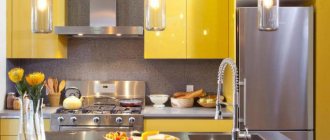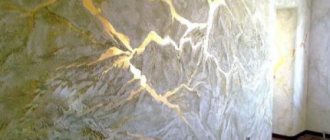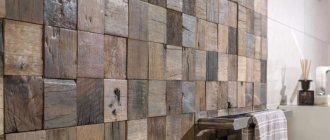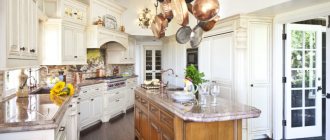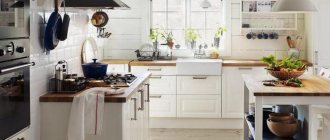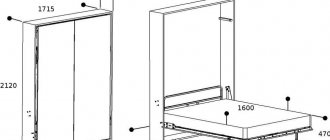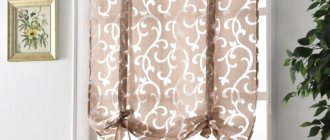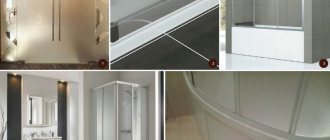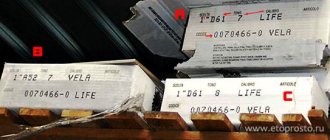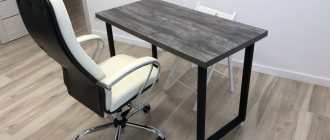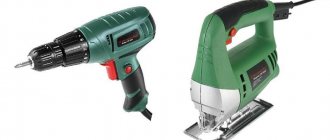The construction of private houses in Russia is becoming increasingly widespread. When building a house, finishing is very important, since it is the appearance of the house that speaks about the taste of its owner. There are different types of facades; it should be noted that the decoration of facades has not only decorative significance, but also has another function. A variety of materials can be used to decorate facades; when choosing materials, you need to remember that the exterior decoration of the building should be combined with the landscape and area around the house.
Scheme of a plaster facade.
Main varieties
Facades can be dry or wet. In the first case, the systems are installed without the use of construction and adhesive solutions. The elements are fixed with mechanical fasteners such as nails, dowels, screws, etc. For example, a siding facade and other materials of this type are called dry.
When considering the types of facades, it is also worth paying attention to those that are installed using wet technology; for this, building mixtures are used. This variety includes plaster facades and systems that are finished, for example, with clinker tiles, because they require the use of an adhesive mixture. Every single-family home owner compares these systems before starting work. Dry facades have a clear advantage, because they can be installed year-round, regardless of weather conditions. But wet systems ensure the integrity of external walls.
Classification
All house facades are divided into two main classes, which are based on the method of their fastening:
- Wet facades. From the name it becomes clear that cladding is done using water, or, more precisely, with the presence of water in the fastening solutions. This includes all types of plaster, facing materials that are mounted on mixtures and solutions. For example, facing bricks, clinker tiles, porcelain stoneware, stone, etc.
- Dry. In this case, the finishing is fastened using mechanical fasteners: nails, self-tapping screws, clamps, dowels, and so on. That is, the complete absence of solutions, adhesives and mixtures.
If we compare these two types, it should be noted that a dry façade can be constructed regardless of the air temperature outside. But the wet construction creates the integrity of the surface of the walls of houses.
Additional classification
Facade structures are further divided into two groups:
- Ventilated. The name itself is based on the use of a frame on which the finishing material is installed. In this case, a gap remains between the facade wall and the cladding, through which moist air vapors are removed from the surface of the supporting structures. This, in turn, improves their performance characteristics. The frame can be wooden or metal.
Advice! If a decision is made to use a wooden beam for the construction of the sheathing, then it is recommended that the latter be treated with an antiseptic and fire-retardant solution. This will protect it from the negative effects of moisture, and mold and mildew will not form. Plus, the fire resistance of the entire structure as a whole increases.
- Non-ventilated. In fact, this is one of the wet finishing options. That is, there is no need to comply with the requirements that the facades of houses “breathe” in order to carry out thermal insulation from the outside. Although on the market today you can buy decorative panels (cement, polymer, wood) that are attached to the walls without wet solutions and without lathing.
Self-tapping screws are used for this. True, the wall surface has one strict requirement - it must be perfectly flat.
Description of ventilated and non-ventilated facades
An additional classification of facades is ventilated and non-ventilated systems. The first type involves organizing a gap between the wall and the finishing material. The wall of the house can additionally be insulated and covered with windproof film.
Air will circulate freely in the air gap, eliminating dampness and moisture that may arise due to condensation on the inside of the decorative material. In addition, moisture can come from inside in the form of steam. At the same time, the materials receive reliable protection, and the building’s ceiling lasts longer, while the insulation is protected from atmospheric phenomena such as rain, snow and wind.
When considering the types of facades, pay attention to non-ventilated systems, which are installed when there is no need for external thermal insulation. If the walls do not breathe, then you can refuse to install a ventilated facade. For example, clinker tiles can be fixed directly to the walls themselves.
Types of facades
The market of modern building materials offers a huge number of coatings for the exterior design of house facades. Among the latter: brick, stone, stucco, vinyl and wood siding. Choosing the right option often depends on numerous factors, the most important of which are cost, strength, reliability, aesthetic characteristics and the basic raw materials used in the construction of the building.
For example, in southern climates, plaster is used as the predominant façade finish. This is due to the cooling properties of the latter. People planning to build a new home strive to achieve the most unique appearance, so they most often choose brick or stone as an exterior finish. There are often cases of combining several types of material in cladding. There are well-known examples of the use of brick when decorating the main facade of a house and a cheaper option, for example, facade panels that frame the sides and back of the building.
Brick (stone) houses suggest a more durable, robust style. They are preferred by loyal fans of the classics and avid conservatives. However, the presented option is quite expensive, which is irrelevant in times of instability in the domestic economy.
Today, the ideal way to cover a facade is vinyl siding. It is he who occupies the position of the most popular and sought-after coating for exterior wall decoration. This is due to the numerous advantages inherent in this material. First of all, this coating is durable and reliable. In addition, siding comes in a wide range of shades of the color palette.
The building materials market is replete with a wide variety of facing materials, the fastening of which is divided into two types: ventilated and non-ventilated facades.
Ventilated facades
The presented type of coating is characterized by the presence of a special ventilation gap that is formed between the wall and the outer cladding. This air gap promotes the natural release of excess moisture. The main examples of ventilated facade systems include: glass, fiber cement panels, corrugated sheets, siding, porcelain stoneware.
These systems are ideal for all climate zones, regardless of the operating conditions. In this case, it is only important to choose the right material for exterior finishing. The indisputable advantage of a ventilated facade is that its installation is possible at any time of the year and in any weather.
In addition to the above-mentioned advantages, ventilated facades allow you to implement any design solutions and help emphasize the individual features of the exterior. The secret lies in the installation features of façade structures. Thus, the installation of a ventilated facade is carried out on special guides. At the same time, the principle of installing sheets, panels, and other elements for all facade materials is largely the same, which allows you to combine many variations of the coating, creating truly real artistic masterpieces!
In case of serious mechanical damage to individual elements of a ventilated facade, it is always possible to replace the damaged panel or sheet with new ones. Of course, this is much simpler, faster, and cheaper than a complete repair of a wall finished, for example, with facing brick or plaster.
Unventilated facades
This type is distinguished by the features of its installation. Fastening is carried out directly on the wall plane. Among the most popular and in demand materials for a non-ventilated facade: plaster facades, clinker tiles, facing bricks
A non-ventilated system is ideal for areas with a stable, stable climate, since sudden changes in temperature and humidity are considered its main enemy. The main advantage of this type is the ability to make the structure more integral, thereby significantly extending the overall service life of the latter.
The high labor intensity of finishing the presented type of facade does not prevent the constant growth in popularity of non-ventilated systems. The vast majority of the constituent elements of ventilated facades are made from very thin materials, such as sheet metal and plastic. Compared to them, integral non-ventilated facades are much more resistant to various types of mechanical damage.
Both types of facades can be either non-insulated or insulated due to the fact that modern technologies for the production of any type of facing material provide for the possibility of thermal insulation. And if at the construction stage thermal insulation requires additional investments, then later it allows you to significantly save on heating and air conditioning.
When choosing a finishing facade material, it is necessary not only to take into account the properties of the coating, the quality of the purchased coating also depends on the supplier company - its integrity and reliability. Thanks to the quality of its work, it is a leader among suppliers of roofing and facade materials. The company's specialists will find an approach to each client. They will tell you basic information about each of the offered types of products and help you calculate the volume and cost of facade material, which you can buy at a low price from the manufacturer in Chelyabinsk, Kopeisk, Magnitogorsk, Korkino and other cities of the Chelyabinsk region by calling the number.
For reference
Types of facades, which are called ventilated, involve the use of not only dry, but also wet installation methods. If you want to tile a wooden house, then you can follow a certain algorithm. A sheathing is installed on the ceiling, which will provide a ventilation gap. If necessary, insulation and windproof film can be laid in this space. At the next stage, OSB is installed along the sheathing, then you can begin laying tiles.
Types of materials for facade finishing
If you want to choose the best façade for your home, then you need to consider not only the design features of the future system, but also the materials. To begin with, you should pay attention to traditional and popular materials. This includes clinker bricks and artificial stone. The latter option is used quite actively for cladding external walls, because it has low weight and is moisture- and wear-resistant.
The cost of such material is relatively low, among other things, it is durable. In appearance, the facade will be almost no different from that consisting of natural stone. Clinker brick has also proven itself well in finishing facades; its low water permeability and smooth texture make walls less easily soiled. The facade is durable and performs well in all climatic conditions.
Types of finishing materials
To understand which façade of a house is better, you should consider not only the design, but also the materials used for its construction. Let's consider the features of traditional and most popular materials for finishing buildings.
Facing with clinker bricks or artificial stone
Artificial stone is successfully used for cladding facades, since it differs from natural stone in its light weight, but at the same time is quite moisture- and wear-resistant. In addition, the price of natural stone is relatively low, and it is also very durable.
The appearance of artificial stone for finishing is practically no different from natural stone.
This subtype of artificial stone, such as clinker brick, has proven itself in the decoration of buildings. The smooth texture and low water permeability make the clinker façade less easily soiled. The material is very durable and performs well in various climatic conditions.
Artificial stone allows you to imitate natural surfaces very realistically
Finishing with decorative plaster
Plastering followed by painting is also one of the traditional methods of finishing facades. At the same time, the low cost of materials combined with the ease of finishing with your own hands make this method the most attractive in terms of savings among all systems.
Most often, the facade is made using the following types of plasters:
- Acrylic . It is the cheapest among plasters, has excellent moisture-insulating qualities and is widely used for thermal insulation with polystyrene foam. The disadvantage of acrylic plaster is its low elasticity, which is fraught with the appearance of microcracks on its surface, as well as damage due to sudden temperature changes.
- Silicone . Silicone plaster is a more expensive option, but has no obvious disadvantages. It is waterproof, resistant to other external factors and can serve for quite a long time without losing its original appearance.
Installation of a plaster facade: a video lesson on its implementation can be found on our portal
Alternative finishes
Let's look at what other facades exist in practice:
- Panels with embedded parts and facade tiles . In fact, tiles differ from artificial or natural stone covers only in thickness and installation method. Attaching to the base is carried out using the usual adhesive method. By using panels with embedded parts, you can create a ventilated façade that makes the floors “warmer.”
- Lining and block house . The naturalness of these materials will provide a lively and noble appearance to the house, while also hiding external defects in wooden and brick walls. With proper care, a wooden facade can last more than 25 years. Cladding with these materials requires the installation of a ventilated façade.
- Siding . The material serves as an excellent barrier to bad weather and gives the face of the building an aesthetically pleasing appearance. The main advantage of siding is its durability.
The design of the thermal panel is completely self-sufficient
- Thermal panels . A relatively new, but effective method of finishing a facade, combining a reliable and beautiful outer layer, as well as an insulating inner one.
Advice! Thermal panels for facades are one of the most promising finishing methods, and we definitely recommend paying attention to them when choosing a material.
So, we looked at various options for arranging the surface of the house, highlighting the advantages and disadvantages of each of them. It should be noted that there is no single correct and best facade; in each individual case, different systems may be ideal.
Therefore, the best house facades are usually determined by specialists based on subjective considerations, as well as depending on the design and materials from which the building is constructed.
Use of facade plaster
By looking at the types of house facades, you can get acquainted in more detail with those that are equipped with plaster. Once applied, it can be painted any color; the material is inexpensive and can be combined with different types of finishes. The most popular in this case are acrylic and silicone plasters. The first option is the cheapest, it has excellent moisture-insulating qualities and is used for thermal insulation of facades with polystyrene foam. There is also a disadvantage here, which is expressed in low elasticity, which can cause microcracks and damage when temperatures change.
If you still can’t decide which types of house facades suit you best, then you should pay attention to silicone plaster, which is more expensive, but has no other disadvantages. The material is waterproof, withstands the negative effects of external factors, lasts a long time and does not lose its original appearance.
Alternative finishes
If none of the above options suits you, then you can choose panels or facade tiles. Tiles differ from finishing with natural or artificial stone only in thickness and laying technology. Fixation to the base is done using the adhesive method. If you use panels, you can use them to create a ventilated façade that thermally insulates the walls.
Considering the types of building facades, you may prefer finishing with a block house or clapboard. The naturalness of these materials is ensured by their noble and lively appearance. External wall defects can be hidden, because brick and wooden facades often have them. If you properly care for this finish, it will last more than 25 years.
Cladding presupposes the need to arrange a ventilated system. If you want to reliably protect your facade from bad weather, then you can use siding, which looks attractive and lasts quite a long time. Thermal panels are also suitable, acting as a new finishing material that combines aesthetic appeal and reliability. The material also has an insulating inner layer.
Vinyl facade - use of polymer materials
The simplest method, and therefore the most common, is cladding houses with siding. The panels are made of polyvinyl chloride with the addition of coloring pigments.
The products are simply mounted using aluminum nails that are not prone to corrosion. Siding facades are durable, fireproof, and do not put pressure on the foundation. The downside of the material is its exposure to low temperatures.
Polyurethane foam panels are polystyrene foam mixed with marble chips and pressed into blocks. Careful installation using this material will allow you to imitate brickwork.
Another variety is sandwich panels, created on the principle of a layer cake with a vapor barrier layer in the middle. Such a facade will be the most protected from noise, will retain heat, and will last for many years. The disadvantage of the design is that the products freeze at the joints at low temperatures.
Fiber cement panels are 90 percent cement. The rest is a mixture of fillers, cellulose and plastic. It is recommended to install the products on a lathing with a gasket made of insulating material.
Glass panels are an elite material option. With their help you can easily create unique solutions in futuristic design. At first glance, the fragile facade is characterized by increased reliability. A variation on this theme is products based on foamed glass granulate. The material is reinforced with fiberglass mesh on both sides.
An interesting option is a facade made of reflective glass, which can create additional shine, as well as light-absorbing glass to create shadows in the room.
Installation of a ventilated facade made of porcelain stoneware: preparation
The types of facade finishing were presented above. If you decide to choose a hanging system, then you can prefer porcelain stoneware as a decorative material for it. At the first stage of installation work, marking is carried out. The master should determine the bottom line, which is drawn horizontally.
Next, the two extreme lines are determined, which will be drawn vertically. You will need to drill holes in the walls using a hammer drill to mount the brackets. A paronite gasket is installed in the holes, and then you can proceed to installing the brackets, for which a screwdriver and anchor dowels are used.
Work methodology
At the next stage, you can proceed to the installation of the wind-hydroprotective and insulating layer. It is necessary to strengthen the heat-insulating plate through the slots for the brackets. Next, the canvas and wind protection are hung, and everything is temporarily secured. Through the film and insulation boards, you need to drill holes in the wall where the disc-shaped dowels are inserted. Insulation boards need to be installed from the bottom row. The slabs should be placed horizontally in a checkerboard pattern. There should be no through gaps between them.
At the next stage, vertical guide profiles are fixed to the adjusting brackets. in the grooves of the load-bearing and support brackets . Different types of facade materials are available for sale today, but porcelain stoneware is most often used for ventilated systems. To fasten it, you should use clamps, which are located in the holes made by an electric drill. The clamps are installed in accordance with the design and fixed with rivets to the frame profile through drilled holes.
Porcelain tiles can be installed with a visible seam. This method is the simplest. However, you can disguise the seams by painting them the same color as the tile itself. If you install decorative material without a visible seam, then the porcelain stoneware should be fixed to the guides using a horizontal cut.
Facade finishing with natural wood
Lining, wooden panels, and a block house will provide a noble look to a country property, hiding wall defects and uneven corners. A natural façade made of wooden materials will last at least 25 years with constant care. Finishing with wooden materials provides excellent ventilation of the building, and its peculiarity is the ability to create three-dimensional shapes by cutting chamfers. Finishing materials for facades made of natural wood are installed in any climate zone; they are not afraid of sudden temperature changes.
Finishing the facade with plaster: preparing tools and materials
Different types of facade work require certain external conditions. For example, plastering can be done in sunny, dry weather. However, it is also important to prepare tools and materials, including:
- primer;
- a set of beacons;
- reinforcing mesh;
- set of spatulas.
A primer will be needed for protective treatment of the facade, and beacons will be needed to control the laid layers. In order to prevent the appearance of cracks, you need to stock up on reinforcing mesh. But in addition to a set of spatulas, you will need a special rule, knives and graters.
Applying plaster
Not all types of finishing the facade of a house will be suitable for the average home craftsman. Therefore, before starting work, you need to assess your capabilities. Before applying plaster, the facade should be cleaned of old materials. The walls are freed from dirt and dust. If there are defects and cracks, they should be eliminated. At the next stage, the wall is primed, and then the mesh is reinforced on it. After this, you need to prepare a solution, the volume of which should correspond to what you can produce in a certain time.
The solution is applied by spraying or injecting liquid under pressure. The first layer will be cosmetic; it will eliminate unevenness and cracks. After it has dried, you can begin applying the second layer, after first cleaning the beacons from the mixture that has fallen on them. This layer should be equipped with a thicker mass.
The beacons should not be blocked, as they will begin to slide under their own weight. These types of facade cladding are usually trusted by specialists, because they are familiar with all the nuances of the technology. At the final stage, you need to rub the surface using the rule, but this must be done after the moisture has evaporated from the plaster. The dried mixture can be applied with paint, which will make the facade more attractive.
Plastered facades - pros and cons
One of the oldest and most affordable home finishing options today is the use of a plaster mixture. The quality and durability of the finish will be directly related to the quality of the base preparation.
There are several types of decorative plaster mixture:
- mineral;
- acrylic;
- silicone;
- silicate.
The most common is mineral plaster, which many know as “bark beetle,” which can be used to create colored textured surfaces. To make the mixture, a cement-sand mortar is used, the main advantage of which is vapor permeability. The material is easy to apply and will last at least 10 years.
The advantage of acrylic plaster is its elasticity, due to which it is possible to avoid the appearance of small cracks. The material is also vapor permeable and is used in combination with foam. The disadvantages of the acrylic mixture include rapid contamination and premature loss of color. The average service life of such coating is 15 years.
Silicate plaster is also vapor permeable; unlike acrylic, it is resistant to stains and retains its performance characteristics throughout its service life (up to 25 years).
Silicone plaster again demonstrates excellent vapor permeability, is compatible with all types of insulation, and is considered the most practical and suitable for finishing the facade of a house. A coating treated with this mixture can last up to 25 years.
Plastered facades of houses look fashionable, stylish and neat, and can be combined with any type of insulation materials.
